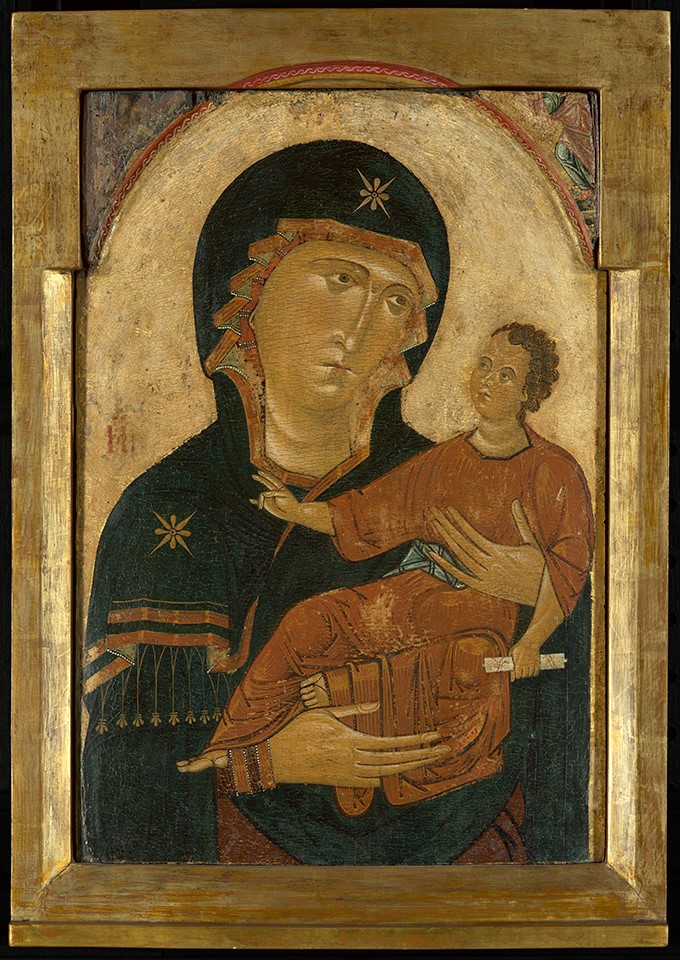Virgin and Child “Hodegetria”; (in the spandrels above) The Annunciation (work of art)
Artwork Info
Key Ideas
- This painting was created in the style of Eastern Christian, or Byzantine, iconography. Iconography is an artistic system of types of images that are used to communicate specific meanings within a religion or culture. In Christian religious painting, for example, the iconography of images includes a lamb to represent Christ and a dove to represent the Holy Spirit.
- The Virgin Mary gestures toward the infant Jesus in this painting, indicating that he is the way to find salvation. The name “Hodegetria” in the title refers to the Virgin Mary and means “she who points the way.”
- Berlinghiero of Lucca was one of a few artists who painted in the Italo-Byzantine style, which was inspired by the religious icons of Eastern Christianity.
- This painting was most likely the center panel of a three-panel altarpiece, or triptych (trip-tick), that was used to decorate the front of a church.
Learn More
Several members of the Berlinghieri family were active in the Tuscan city of Lucca in the 13th century. Their Italo-Byzantine style of painting was inspired by the religious icons of the Eastern Christian (Byzantine) tradition. This painting style features elongated figures with solemn expressions silhouetted against a gold background. Long, continuous lines define facial features such as the brows and nose, and dark triangles represent shadows under the eyes.
The Virgin Mary’s fringed veil is decorated with stars to show that she is the “Star of the Sea” (the meaning of the Jewish form of her name, Miriam) and as a reminder that she is as constant as the North Star, which represents guidance, hope, and inspiration. She holds the Christ Child high as he extends his right hand in a gesture of blessing. The infant Jesus is depicted holding a scroll of Old Testament scriptures, as a reminder that he is the Messiah foretold by the Jewish prophets.
This painting most likely served as the center panel of a triptych. The two missing outer panels or “wings,” may have depicted saints and/or scenes from the life of Christ. The wings would have closed underneath the spandrels (triangular spaces between the top of an arch and a rectangular frame) in the upper corners of the center panel. One angel is visible in the right spandrel, but its mate on the left side has been damaged beyond recognition.
Tags: medieval, symbolism
Additional Resources
Resources for Teachers:
- Read an article about the Byzantine symbol of the Virgin Hodegetria (“she who points the way”) from the National Gallery of Art.
- View a similar painting by Berlinghiero.
- Read an article to learn more about Berlinghiero.
Resources for Students:
- Watch a video to learn about the Byzantine Empire and the time period in which this painting was created.
- Explore a creative activity from METKids inspired by another “Virgin and Child” painting.
- Watch a video to learn more about tempera paint.

